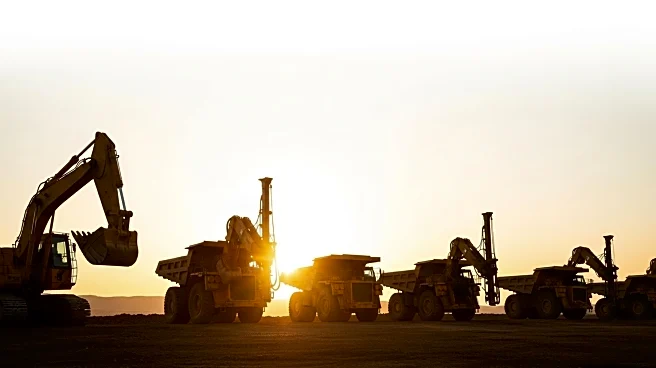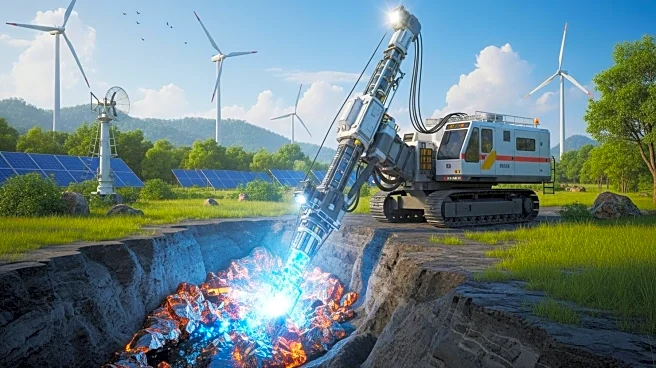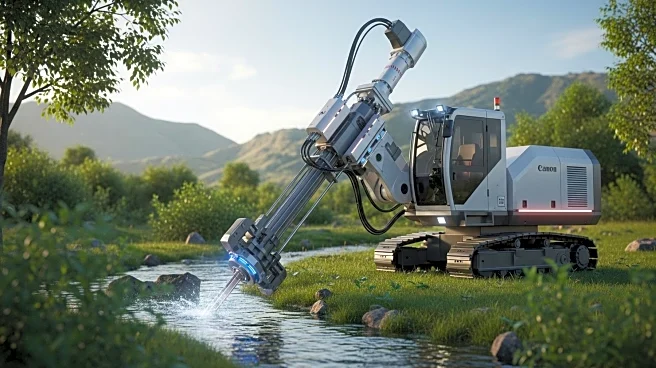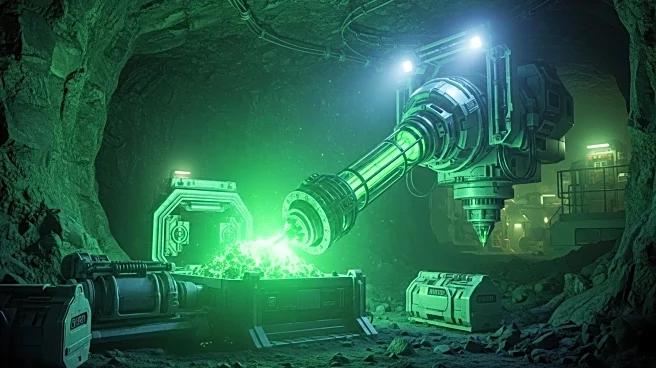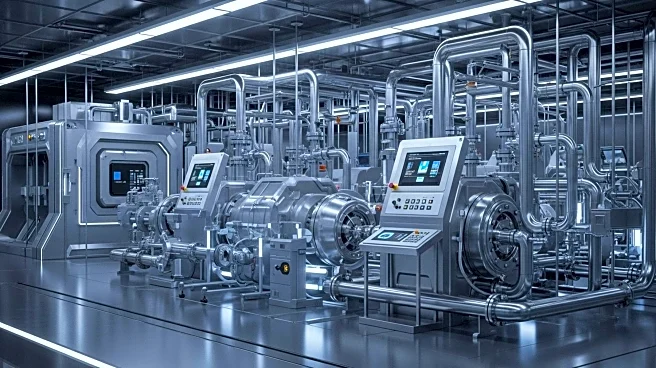What's Happening?
Mining companies are increasingly adopting an on-demand equipment hire model to address budget pressures and fluctuating commodity cycles. This approach allows miners to access machinery as needed, converting capital expenditure into operational expenses. The Hire and Rental Industry Association (HRIA) describes this shift as the 'Netflix model,' where miners pay for equipment use rather than owning it outright. This model offers flexibility, reduces overheads, and allows companies to scale fleets according to production cycles. The Australian mining equipment rental market is projected to reach over US$10.40 billion by 2030, driven by the demand for surface and underground mining equipment.
Why It's Important?
The shift to on-demand equipment hire is significant for the mining industry as it provides financial flexibility and reduces the risk of equipment obsolescence. By converting capital expenses to operational expenses, mining companies can better manage cash flow and balance sheets. This model also transfers maintenance and compliance responsibilities to hire providers, reducing internal overheads. The approach supports environmental sustainability by increasing equipment utilization and reducing redundant assets. As the mining sector contributes significantly to Australia's GDP and employment, this model could enhance operational efficiency and competitiveness.
What's Next?
The adoption of the on-demand hire model is expected to grow, with more mining companies and contractors exploring flexible commercial models. The HRIA plans to host HIRE26, an event to showcase the latest technology and innovation in equipment hire, which could further promote this model. As technology evolves, mining companies may increasingly rely on hire providers for specialized and digitally enabled equipment, enhancing operational capabilities. The industry may also see increased collaboration between hire firms and technology platforms to offer comprehensive solutions, including logistics and training.
Beyond the Headlines
The on-demand hire model reflects broader trends in the economy towards subscription-based services, emphasizing flexibility and efficiency. This shift may influence other sectors facing similar pressures, such as construction and manufacturing. The model also aligns with environmental, social, and governance (ESG) goals by promoting resource efficiency and reducing carbon footprints. As the industry adapts to technological advancements, the role of hire providers in ensuring safety and competency through training programs becomes increasingly important.
